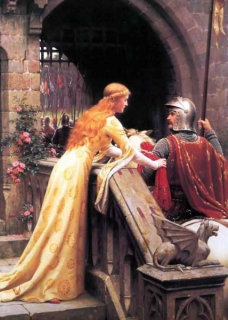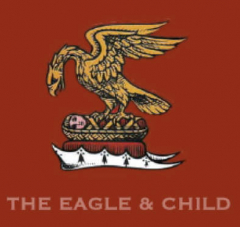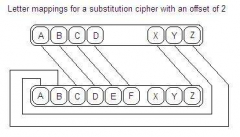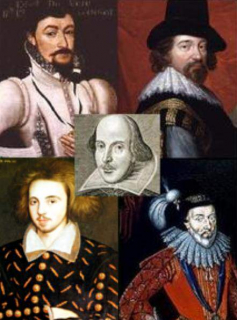John’s Story
Ximene meets John Stanley, a young soldier in the service of the Black Prince who has vowed allegiance to the code of chivalry.His meeting with Ximene soon challenges every element of the code he lives by. Ximene sees in John the potential to be her champion, a perfect knight. Initially she seduces him with the aim of ensuring his commitment to her cause but soon she finds it difficult to be apart from him for too long an interval.
Their story is the epitome of historical romance as their lives become invisibly and indivisibly entwined.
 This is the conventional view of the marriage between John Stanley and Isabel LathomMainstream history tells us that John Stanley was born in 1338 as the son of a forester. It tells us that his family was well connected, of Ango-Saxon and Celtic stock who had intermarried with the invading Normans. In little more than sixty years he progressed from minding sheep on the Wirral Peninsula to becoming King of the Isle of Man, at a time when the right to rule could only be granted by the Pope and was very rarely given.
This is the conventional view of the marriage between John Stanley and Isabel LathomMainstream history tells us that John Stanley was born in 1338 as the son of a forester. It tells us that his family was well connected, of Ango-Saxon and Celtic stock who had intermarried with the invading Normans. In little more than sixty years he progressed from minding sheep on the Wirral Peninsula to becoming King of the Isle of Man, at a time when the right to rule could only be granted by the Pope and was very rarely given.
The genealogical records of the Stanley family itself are adamant that John Stanley had one wife; Isabel de Lathom , who he married in 1385 when he was 47 and she was 21. This was by no means impossible but unusual for the time. It certainly makes Aunty Gertie’s concept of an earlier marriage not only possible, but probable.
 A young girl falls in love with a knightIn any case it is clear that there is something wrong in the timing of John’s Marriage to Isabel.
A young girl falls in love with a knightIn any case it is clear that there is something wrong in the timing of John’s Marriage to Isabel.
The main source of information about him is in the archives of the government of the Isle of Man.
It is in the form of a book written by John Seacome in 1737 and it must be remembered that at the time he was working directly or indirectly for the Stanley family.
He tells a story repeated and embellished by later authors which indicates that Isabel fell in love with John when he was tournament champion of Europe and she was a very young girl. The reason for the delay in the marriage was because he father would not give his approval. It is just not possible. If John Stanley was tournament champion, and this story is not complete family propaganda it would have been in the years approximately 1360 to 1364 and Isabel was only born in 1364.
However one piece of information I picked up from “ The traditions of Lancashire’ by John Roby published in 1872 was that John had a reputation as an amateur troubadour. An unusual talent, but perhaps not for that age.
John’s Eldest Son
 This is the implication of Aunty Gertrude's story. John II is not descended from the LathomsThe major issue is the date of John II’s birth.
This is the implication of Aunty Gertrude's story. John II is not descended from the LathomsThe major issue is the date of John II’s birth.
Coventionally it is placed at 1386 to coincide with his fathers marriage to Isobel Latham, but this leaves two anomolies, both derived from the parliamentary record.
However we know that John II was acting as a crown commissioner in 1402. If he was born in 1386 then he was acting as a crown commissioner at the age of I6. Secondly we know that he reached his majority in or about 1400. The age at which one attained “majorinity” was the same then as it is now, twenty -one. Both these facts would tend to place John II’s birth at around 1379 or earlier. This is clearly a problem. It would place his birth before Isabel married Geoffrey Worsley, could he have been illegitimate, in which case he would have been unable to inherit?
In an attempt to make sense of the following generations, in which there are two John’s fathering children in the same time period, some genealogists have John II, being born in 1368 (not 86) Unfortunately this was when when Isabel was only four and it would mean that Isabel could not be his mother.
Perhaps he was born even earlier to an unknown mother? Aunt Gertudes stories suddenly acquire new meaning. Could Aunt Gertrude be right? If so why would Isabel allow her husband to leave her estates to a son from his first union?
Isabel De Lathom
 Isabel's '" unlawful" marriage to GeoffreyThis leads to the true story of Isabelle de Lathom. It took years of ferreting to try to understand exactly what happened. What I learned is now all available on the web, though so far it has not been picked up by any of the geneologies.
Isabel's '" unlawful" marriage to GeoffreyThis leads to the true story of Isabelle de Lathom. It took years of ferreting to try to understand exactly what happened. What I learned is now all available on the web, though so far it has not been picked up by any of the geneologies.
The results were surprising to say the least.
There is no doubt that Isabel became John’s wife. Seacome suggests that her father thought he was an unsuitable match, thus explaining why John married so late in life. This story is supported by all the available histories.
However I have taken the trouble to look at the parish records of Lathom which shows that she also had an earlier marriage, to Geoffrey Worsley which was subsequently declared “unlawful”.
Further examination of the Worsley parish records shows and that she had at least one child, Elizabeth, by him. Not only that but the marrige was decidedly unusual. Geoffrey put his first wife, Mary de Fenton, in a nunnery and then married Isabel. After five years, he died. Mary re-emerged from the nunnery claimed her marriage to be valid and succeeded in having Isabel’s children declared illegitimate and therefore destroyed Isabel’s reputation.
However events were moving quickly. Sir Thomas, Isabel’s father had previously left his estates to an “adopted” son known as Sir Oscatel. Now he suddenly declared that that in the event of his sons not having a male heir, the estates should devolve to Isabel. His two sons died soon afterwards. It was at this stage that John Stanley married Isabel. So much for the romantic stories!
Arthur Worsley
 Elizabeth's forced marriage to ArthurThe story progresses further. From the history of the British Parliament (1386-1421) it can be discovered that Robert Worsley, a member of the junior branch of the Worsley family, somehow obtained Elizabeth’s wardship with the intention of forcing her marriage to his son Arthur and thereby establishing a claim to the Worsley estates (and perhaps with an eye to claiming the Lathom estates).
Elizabeth's forced marriage to ArthurThe story progresses further. From the history of the British Parliament (1386-1421) it can be discovered that Robert Worsley, a member of the junior branch of the Worsley family, somehow obtained Elizabeth’s wardship with the intention of forcing her marriage to his son Arthur and thereby establishing a claim to the Worsley estates (and perhaps with an eye to claiming the Lathom estates).
The marriage was affected in 1400 ( with Elizabeth at 19 years of age), but John Stanley Jr ( at Age 16!?) in 1402 as crown commissioner managed to get Arthur declared insane.
In 1414 after the death of his father John II then obtained the custody of Arthur Worsley who died “in his care” thereby finally ending any threat to the Stanley inheritance.
Suddenly at the very beginning of my research, Aunt Gertude’s story aquires sinister overtones.
There is not a word of all this in Seacome, the Isle of Mann archieves or any other formal history. Seacome was a serious historian who must have known all this. The information was therefore changed to suit the sensitivities of the Stanley Family.
It was about this stage that I developed a healthy scepticism for “approved” histories!
The Eagle and Child
 Was Sir Ocatel a real person? the candidates as indicated in red. Note the name of Ralph's son. Oscatel /Otewell?A secondary story of the foundation of the Stanley Dynasty, which is included in the Seacome history is the backgtound to the adopted son Sir Oscatel. It takes the form of the legend of the Eagle and Child.
Was Sir Ocatel a real person? the candidates as indicated in red. Note the name of Ralph's son. Oscatel /Otewell?A secondary story of the foundation of the Stanley Dynasty, which is included in the Seacome history is the backgtound to the adopted son Sir Oscatel. It takes the form of the legend of the Eagle and Child.
The legend says that Isabelle’s father, Sir Thomas, had an affair with a lady called Mary Oscatel who gave birth to a male child. He had no male child by his wife and so pretended that an eagle had deposited the child in his estate, giving him an excuse to bring the child into his house in circumstances which made the child acceptable to his wife.
Wether she believed the story or not, Thomas’ wife apparently approved of this arrangement as it would stabilise the future administration of the estate. She then promptly concieved a male child herself but “Sir Oscatel” apparently grew up with expectations that as the eldest son he would inherit the Lathom estates.
Change of Will
Sir Robert’s will was contested and on his deathbed Isabelle’s father relented and subject to there being no male issue from his second son made Isabelle his heir.
The inheritance of the Lathom estates continues to be contested from the date John Stanley married Isabel in 1385 to around 1409.
I have made “Sir Oscatel” to be John II who was hidden away under a non de plume on the Lathom estates to keep him safe from those who wished to destroy Ximene. Why did the Lathoms accomodate her in this deception and invent the legend?
Because as shown above in the “conventional” geneology John Stanley’s grandmother was a Lathom!
The inheritance of the Lathom estates was not finally settled until John II inherited in 1414. At that time John II was probably the rightful inheritor but through his father not his mother. There was the small problem that he was probably illigimate, but there were events in the highest levels of society which made that less of a problem than it was in any other age. John of Gaunt not only married the illegitimate daughter of Pedro of Castile and through her claimed the throne of Castile but had his illegitimate children by another woman, Catherine de Roet, declared to be legitimate. John II had a strong claim, but so did Henry and Thomas Stanley, Isabel’s sons by John. It would appear that the final judgement was that by virtue of his marriage to Isabel John became heir to the Lathom estates and therefore his eldest son inherited, even though his eldest son was by a different Mother. No wonder the inheritance to a long time to sort out!
 From Knowsley house. The eagle as a benefactor.As all this information was digested, The plot for this stories about Ximene evolved to make Ximene the frenchwoman, who John meets when in Occitan with the Black Prince in 1355 and 1356 and who is the mother of John II. It also casts Ximene as the personification of the Eagle, seen by later generations of Stanley’s as the facilitator of the founding of their dynasty.
From Knowsley house. The eagle as a benefactor.As all this information was digested, The plot for this stories about Ximene evolved to make Ximene the frenchwoman, who John meets when in Occitan with the Black Prince in 1355 and 1356 and who is the mother of John II. It also casts Ximene as the personification of the Eagle, seen by later generations of Stanley’s as the facilitator of the founding of their dynasty.
Different Views of the Eagle
A statue from the family home at Knowsley, in Lancashire, clearly depicts the Eagle as a Guardian or Protector.
 The pub signs frequently show the Eagle as a threatThe Eagle was not however seen through the same eyes by the Lytham family into which John eventually married, or the rest disinherited Stanley family. Neither group ever forgot that the wealth of the later Stanleys was founded on the Lathom estates.
The pub signs frequently show the Eagle as a threatThe Eagle was not however seen through the same eyes by the Lytham family into which John eventually married, or the rest disinherited Stanley family. Neither group ever forgot that the wealth of the later Stanleys was founded on the Lathom estates.
Hundreds of Public houses in the north of England and one famous inn in Oxford are called the Eagle and Child. Many of the pub signs, appear to show the Eagle as a predator, threatening the child.
Cryptography
 I have now lived with Ximene for so long that it is hard to remember she is a fictional character. An example of this was when I found an oblique reference to the fact that the Stanley family became skilled at the use of cyphers.
I have now lived with Ximene for so long that it is hard to remember she is a fictional character. An example of this was when I found an oblique reference to the fact that the Stanley family became skilled at the use of cyphers.
The name “Oscatel” had puzzled me for a long time so I mugged up cryptography and in particular the varieties of substitution cyphering. I found that with simple substitutions “Oscatel” can be read as “Trencavel”. I was elated to have made the link and then realised this is nonsense. Ximene is a fiction character, therefore her family name has no meaning either. Nevertheless I will use it in the book!
William Shakespeare
 The candidates for authorship of shakespeare plays.Clockwise from top left: Edward de Vere, 17th Earl of Oxford, Francis Bacon, William Stanley, Earl of Derby and Christopher Marlowe.As the research proceeded I became convinced that John’s marriage and the inheritance of the Lathom estates were closely connected with John’s appointment as King of Mann.
The candidates for authorship of shakespeare plays.Clockwise from top left: Edward de Vere, 17th Earl of Oxford, Francis Bacon, William Stanley, Earl of Derby and Christopher Marlowe.As the research proceeded I became convinced that John’s marriage and the inheritance of the Lathom estates were closely connected with John’s appointment as King of Mann.
It also feels as if they were an inherent part of the Lancastrian revolution in which Richard II was deposed by Henry Bolingbroke who assumes the throne as Henry IV. I find myself as an apologist for the Stanley family and for the Lancastrians.
There was another author who did precisely that, William Shakespeare, and perhaps not even that is totally unconnected with our story.
A descendant of John Stanley, William Stanley (1561-1642) is considered by some to be the real author of Shakespeare’s plays. There are of course many other contenders but the Stanley alternative seems to be gathering adherents. A film by Jaime Salon ‘El Otro William” and two books by Jennifer Lee Carrell “Interred with their bones” and “The Shakespeare Secret” all promote William Stanley as the real author.
